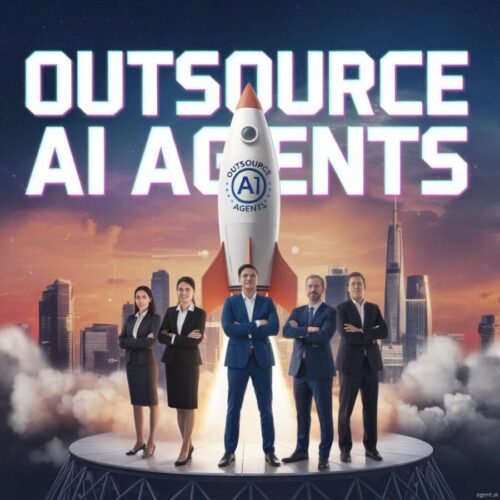Pinpointing AI Opportunities: A Strategic Guide for Business Leaders
Posted 2 months ago by Joseph Tricarico
Pinpointing AI Opportunities: A Strategic Guide for Business Leaders
The advent of artificial intelligence (AI) presents groundbreaking possibilities for businesses aiming to boost productivity, cut expenses, and provide exceptional customer interactions. Nevertheless, recognizing the appropriate AI applications necessitates a deliberate methodology that harmonizes overarching business aims, data availability, and practical implementation.
Here’s my comprehensive, phased approach, complete with specific elements and metrics, designed to guarantee successful integration.
1. Establish Explicit Business Goals
Clearly stating your organizational objectives forms the bedrock of any successful AI venture. Without a well-defined purpose—such as lowering costs, enhancing efficiency, or improving customer experience—AI efforts risk becoming isolated experiments rather than strategic investments.
A 2022 study by the McKinsey Global Institute indicated that 63% of organizations pinpoint cost reduction or operational efficiency as key motivators for AI initiatives.
Connect each AI project to concrete Key Performance Indicators (KPIs), such as savings in expenditure, increased output, or customer satisfaction levels (measured by metrics like the Net Promoter Score). This alignment ensures that AI endeavors remain pertinent to the company’s overall targets.
2. Perform a Business Process Assessment
A detailed examination of current workflows aids in identifying inefficiencies, bottlenecks, and areas where AI could offer the greatest advantages.
A report from Deloitte Insights suggests that up to 30% of time spent on routine tasks can be automated or streamlined through AI.
Outline each process from start to finish, noting frequently performed activities, problem areas, and resource-intensive phases. Once these aspects are identified, assess which AI technologies—such as computer vision, natural language processing, or machine learning—could provide the most significant improvements.
3. Utilize Data Powerfully
The effectiveness of AI heavily relies on the volume and quality of the data at hand. Inconsistent or incomplete data sets can undermine even the most advanced algorithms.
Research from IBM’s 2022 Global AI Adoption Index reveals that over 80% of surveyed companies identify data-related challenges as a primary obstacle to adopting AI.
Conduct an evaluation of your data readiness, focusing on its completeness, accuracy, and management. Address any deficiencies through data cleaning or integration efforts before launching AI-powered projects.
4. Gather Ideas from On-the-Ground Teams
The most viable AI use cases often originate from the employees who are most involved in daily operations. By engaging these frontline experts through brainstorming sessions or hackathons, organizations can uncover unique and impactful ways to apply AI.
A 2022 article in the MIT Sloan Management Review emphasizes that companies that capitalize on employee-driven innovation are 2.3 times more likely to surpass financial targets.
Encourage teams from different departments to propose AI-related concepts. Offer rewards for creative thinking and cultivate a collaborative environment that values insights from all levels.
5. Investigate Market Trends and the Competitive Arena
Observing how competitors are implementing AI provides insight into evolving industry norms and potential avenues for differentiation.
Gartner’s 2023 Market Insights highlight that over 50% of global enterprises are anticipated to have AI operational in core business functions by 2025.
Conduct regular analyses of your competitors to understand where AI is making the biggest impact in your sector. Identify weaknesses in your current offerings and explore how AI can address these gaps or generate new opportunities.
6. Rank Use Cases Based on Impact and Viability
After compiling a list of potential AI applications, the subsequent step involves evaluating each possibility using a structured scoring system that weighs its potential impact (value) against the ease of implementation (effort).
Comprehensive List of Elements and Metrics for Evaluating AI Use Cases
- Strategic Alignment: How well does the AI project support the overarching business strategy and long-term goals, such as increasing market share or becoming a leader in innovation? Metric: Relevance to long-term strategy.
- Potential ROI: How quickly can the initiative recoup its investment and contribute positively to the financial results? Metric: Forecasted cost savings or revenue growth (expressed as a percentage of investment).
- Operational Efficiency Gains: How much can the AI project improve the speed and productivity of workflows? Metric: Decrease in manual labor hours or process completion times.
- Data Readiness: Is there enough suitable data available to effectively train robust AI models? Metric: Completeness, quality, and accessibility of existing data.
- Technical Complexity: How much specialized AI knowledge or significant system changes are required? Metric: Level of AI expertise needed, difficulty of integrating with current systems.
- Regulatory and Ethical Compliance: Does the project adhere to all relevant laws and ethical guidelines for data handling and decision-making? Metric: Extent of compliance requirements (GDPR, HIPAA, industry-specific regulations).
- Time to Implement: How long will it take to get the project from the initial stage to a fully operational state? Metric: Estimated timeframe (in months) for pilot testing and full deployment.
- Scalability: Can the AI solution be easily expanded or applied across different parts of the organization to maximize its benefits? Metric: Potential to extend or duplicate AI solutions across various business units.
7. Map Use Cases on a Value vs. Effort Diagram
Presenting potential AI projects visually on a chart that compares their business value (impact) against the effort required for implementation (feasibility) can aid in prioritization. Quick wins (high value, low effort) are particularly attractive as they demand minimal resources yet demonstrate rapid results.
Visual frameworks are proven decision-making tools that minimize subjective biases in project selection.
8. Select Prominent Use Cases
Initiating with projects that promise swift, noticeable results can build organizational enthusiasm for AI, showcasing its potential before tackling more intricate initiatives.
Harvard Business Review indicates that early success stories can lead to as much as a 60% increase in executive support for subsequent AI projects.
Seek opportunities in customer-facing roles or cost-center departments where automation or intelligent systems can deliver immediate ROI and enhance brand image.
9. Ensure Potential for Expansion
Prioritize AI applications that can be easily expanded or applied to other departments or geographic areas. Scalable projects generate more substantial returns over time and cultivate an AI-centric mindset.
Analysis by PwC demonstrates that organizations with a plan for scalability experience a 2-4 times greater return on their AI investments.
Incorporate scalable architecture by choosing cloud-based platforms and adaptable AI tools that facilitate easy replication and upkeep.
10. Comply with Regulations and Ethical Standards
As AI applications become more widespread, adhering to regulations and using AI ethically are crucial for safeguarding brand reputation and avoiding legal issues.
The European Commission’s guidelines on trustworthy AI emphasize principles like fairness, transparency, and accountability.
Establish internal AI governance policies and regularly assess AI systems for data privacy, bias, and accuracy. Compliance builds trust among stakeholders and ensures long-term sustainability.
In Conclusion
Identifying high-impact AI use cases demands a focus on strategic goals, a thorough examination of internal processes, data availability, and a realistic assessment of feasibility. By employing a systematic approach—defining objectives, gathering ideas, studying market trends, and evaluating each potential project based on its impact and feasibility—organizations can direct their AI efforts toward the areas with the greatest potential for transformative change. This structured guide empowers business leaders and CXOs to prioritize initiatives that offer quick successes and measurable ROI, laying the foundation for widespread, sustainable AI adoption. Ultimately, a well-defined AI strategy acts as a catalyst for innovation, operational excellence, and lasting competitive advantage.
Drawing from these insights, I encourage you to consider your organization’s current AI readiness and determine your next steps.





